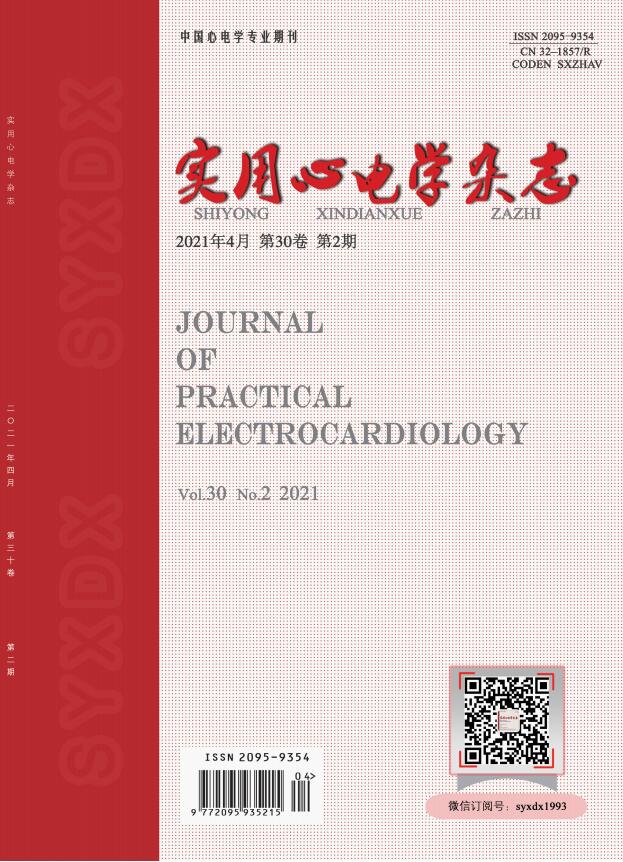ZHANG Yanchun, DONG Jianting, FENG Li, YUAN Yong, SUN Jie, LIU Cui, HU Bing
Objective To analyze the characteristics of clinical ECGs of patients with cardiac amyloidosis (CA). Methods Retrospective analysis was carried out on the characteristics of clinical ECGs of 45 CA patients definitely diagnosed in our hospital. Results Among the ECG manifestations of 45 cases, tachyarrhythmias include occasional atrial premature beats (19 cases, 42.22%), atrial tachycardia (16 cases, 35.56%), atrial fibrillation (14 cases, 31.11%), occasional premature ventricular contraction (12 cases, 26.67%), frequent premature ventricular contraction (8 cases, 17.78%), nonsustained ventricular tachycardia (6 cases, 13.33%); slow arrhythmias include sinus bradycardia (11 cases, 24.44%), sinus arrest over 2.0 s (3 cases, 6.67%), first-degree atrioventricular block (8 cases, 17.78%), second-degree atrioventricular block (2 cases, 4.44%), ventricular escape rhythm (2 cases, 4.44%), severe ventricular arrest (1 case, 2.22%) with the longest arrest duration of 6.16 s; other ECG manifestations are QRS low voltage, waveform of false infarction, ST-T changes, bundle branch block and so on. Conclusion ECG examination is easy and convenient to be operated with high feasibility. It is helpful in the early diagnosis of CA.
